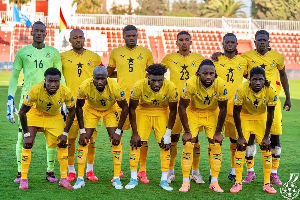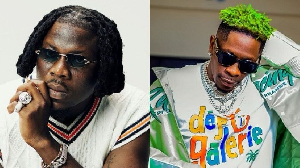Somewhere in Ghana, along the Lake Volta, one of the world’s largest man-made lakes created during the construction of Ghana’s Akosombo dam in the 1960s, many children are trafficked from their homes especially those in the rural to work in the fishing industry.
Living in tough conditions and working long hours every day, they are exploited by desperate fishermen who want to feed their families and make a living along the banks of Lake Volta.
In some fishing communities along Lake Volta, Ghanaian children are being sold into a life of forced labour, malnutrition, abuse and no schooling.
Traffickers prey on poor families in source communities along the country’s coast.
According to the Protocol to Prevent, Suppress and Punish Trafficking in Persons, Especially Women and Children (2000), “child trafficking is the recruitment, transportation, transfer, harboring or receipt of children for the purpose of exploitation.”
Child trafficking is therefore a violation of the rights of children, their well-being and it denies them the opportunity to reach their full potential.
Slave children work long hours mending, setting and pulling nets, cleaning and smoking fish, and rowing the fishing boats.
Boys as young as six are forced to dive to disentangle nets caught on tree stumps below this large man – made lake. The fishermen tie weights to the children to help them descend more quickly.
When the water is too cold or the children get caught in the nets below, it is uncommon for them to drown, and later their bodies found washed up on shores.
If sick or injured, the children receive no care or treatment.
While most of the enslaved children are boys, some girls are used for domestic work and to sell the fish in the market; like other trafficked girls in Ghana, they are likely to be sexually abused as well.
Is Ghana close to achieving its goal in the fight against child trafficking?
In 2010, the Government took measures to tackle the exploitation of children by adopting a National Plan of Action for the Elimination of the Worst Forms of Child Labor in Ghana.
The plan provides a framework for a significant reduction of the worst forms of child labour in the nation by 2015.
The International Organization for Migration (IOM) works to rescue children trafficked into Lake Volta’s fishing industry. Since 2002, more than 700 children have been liberated, rehabilitated, and reintegrated into their home communities by the IOM.
It also has national laws restricting child labor, but the laws are not vigorously enforced. The minimum age for work in Ghana is 15 years; 18 years for hazardous work, however, the practice of children working is commonly accepted in our Ghanaian society.
Also on September 18, 2014, a write up by GNA, explained that in 2013, the Anti-human Trafficking Unit of the Ghana Police Service rescued 262 trafficked people during special operations country-wide.
This shows the government is still doing its best to eliminate child trafficking in the country.
I will urge the clergy, parents, traditional rulers and the society at large to help eradicate this menace in our country. More hands need to be put together to ensure the success of this goal set.
Parents, on the other hand, must not respond openly to traffickers so easily with any information that they give to them. Children are our future leaders of the country and therefore every parent must report to the police or any organization in charge of arresting child traffickers to hold such people responsible whenever they come into contact with any.
Again, parents must be confident to stand against all hardships or challenges and provide the necessary materials for their children to ensure proper upbringing.
I will conclude by urging churches to embark on public education campaigns where they visit most parents in the rural areas to create the awareness of the situation and provide various ways they can seek remedy when they get into contact with the traffickers.
Opinions of Thursday, 20 November 2014
Columnist: Bernice Owusuwaa














